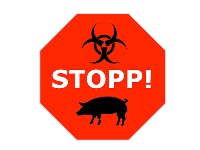Most of A/H1N1 Patients are Young People and Children
The number of A/H1N1 cases in Lebanon has reached 476, with more than 300 cases increased in the past 15 days, the country's Ministry of Health said in a statement on Friday.

The ministry said most of the A/H1N1 patients are young people and children, and assured that no new death cases occurred after Lebanon's first A/H1N1 flu death was confirmed on August 1.
The A/H1N1 cases in Lebanon have increased by more than 300 since July 31 when the health ministry announced the country confirmed 162 cases of the flu , Xinhua reports.
"The amount of frenzy or hysteria is totally disproportionate to the overall reality of the disease," Dr. Jai Narain, the head of the regional communicable disease office for the World Health Organization, said Friday.
Breathless reports of swine flu have dominated India's 24-hour news channels desperate for stories amid the August doldrums. That in turn has helped whip the public into a frenzy, even in cities with relatively few cases of flu.
In New Delhi, where no deaths have been reported, people have begun wearing surgical masks in the street. In Lucknow, parents demanded their children be tested , The Associated Press reports.
“People intuitively overestimate the risk of rare events and underestimate the risk of common events,” S.J. Habayeb, the World Health Organization’s representative to India, said by e- mail. “This has happened with the novel H1N1 influenza virus.”
Data point to low virulence of H1N1 compared with diseases such as avian influenza, deadly in three out of five cases. Swine flu has killed about 1,500 people since the outbreak began in April, less than 1 percent of the case total, the latest WHO tally showed. An average 1,250 people die each day in India from diarrhea-related diseases and 1,000 from tuberculosis, according to a 2006 report by the Geneva-based organization , Bloomberg reports.
Subscribe to Pravda.Ru Telegram channel, Facebook, RSS!





